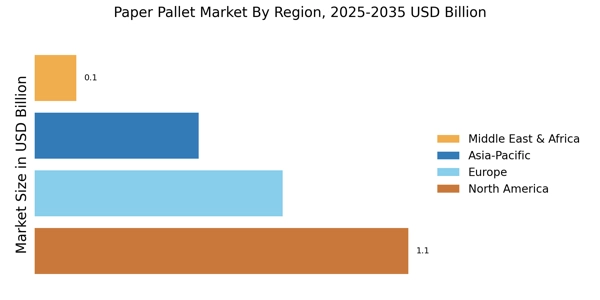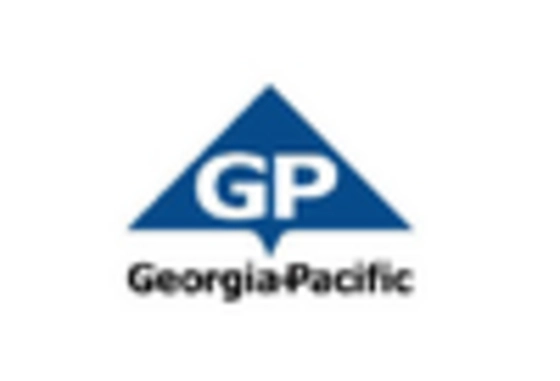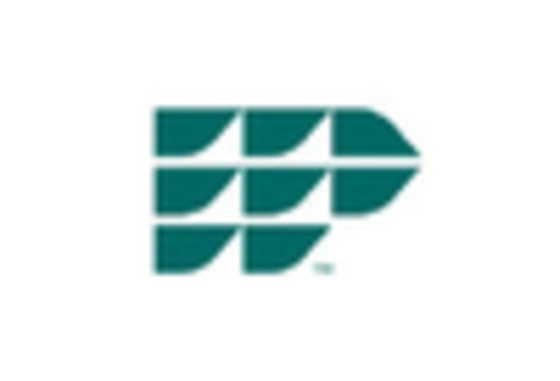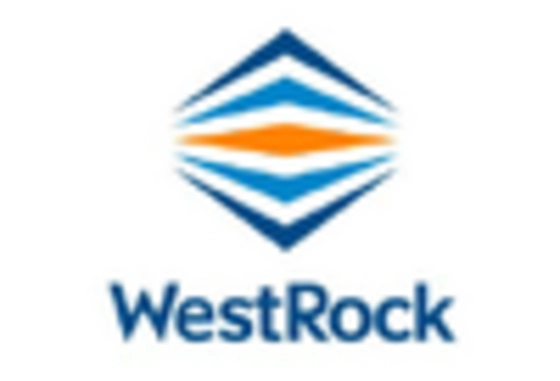Cost Efficiency
Cost efficiency remains a critical driver in the Paper Pallet Market, as businesses continuously seek ways to reduce operational expenses. Paper pallets are often more affordable than their wooden or plastic counterparts, particularly when considering the total cost of ownership, which includes transportation and disposal costs. The lightweight nature of paper pallets contributes to lower shipping expenses, making them an attractive option for companies looking to optimize their logistics. Additionally, the ability to recycle paper pallets further enhances their cost-effectiveness, as companies can minimize waste disposal fees. Recent analyses indicate that organizations utilizing paper pallets can achieve savings of up to 20% in logistics costs compared to traditional pallets. This financial incentive is likely to propel the Paper Pallet Market forward as more businesses recognize the economic advantages of adopting paper-based solutions.
Consumer Preferences
Shifting consumer preferences are significantly impacting the Paper Pallet Market, as buyers increasingly favor sustainable and innovative packaging solutions. The modern consumer is more informed and concerned about the environmental implications of their purchases, leading to a demand for products that align with their values. This trend is prompting manufacturers to adopt paper pallets, which are perceived as a more responsible choice compared to traditional materials. Industry expert's indicates that approximately 70% of consumers are willing to pay a premium for products packaged in environmentally friendly materials. This shift in consumer behavior is likely to drive growth in the Paper Pallet Market, as companies adapt their packaging strategies to meet these evolving preferences. As a result, the industry may witness a notable increase in market share over the next few years.
Regulatory Compliance
Regulatory compliance is increasingly influencing the Paper Pallet Market, as governments worldwide implement stricter packaging regulations aimed at reducing environmental impact. These regulations often favor sustainable materials, thereby creating a favorable environment for paper pallets. Companies that fail to comply with these regulations may face penalties or restrictions, prompting a shift towards compliant packaging solutions. The Paper Pallet Market stands to gain from this trend, as businesses seek to align their practices with regulatory requirements. Furthermore, compliance with international standards can enhance a company's reputation and marketability, making paper pallets an appealing choice. As regulations continue to evolve, the demand for compliant packaging solutions is expected to rise, potentially leading to a market expansion of around 12% in the coming years.
Technological Innovations
Technological advancements are playing a pivotal role in shaping the Paper Pallet Market. Innovations in manufacturing processes, such as automated production lines and advanced material science, are enhancing the efficiency and quality of paper pallets. These technologies not only streamline production but also reduce waste, thereby contributing to cost savings for manufacturers. Furthermore, the integration of smart technologies, such as RFID tracking, is becoming increasingly prevalent, allowing for better inventory management and logistics. This trend is indicative of a broader movement towards digitization in the packaging sector. As companies seek to optimize their supply chains, the Paper Pallet Market is likely to benefit from these technological enhancements, which could lead to a projected growth rate of around 10% annually over the next five years.
Sustainability Initiatives
The increasing emphasis on sustainability within the Paper Pallet Market is driving demand for eco-friendly packaging solutions. Companies are increasingly adopting paper pallets as a viable alternative to traditional wooden or plastic pallets, which are often less environmentally friendly. The shift towards sustainable practices is not merely a trend; it reflects a broader commitment to reducing carbon footprints and enhancing corporate social responsibility. As consumers become more environmentally conscious, businesses are compelled to align their operations with these values. This transition is evidenced by a reported increase in the use of recycled materials in paper pallet production, which has been noted to rise by approximately 15% over the past year. Consequently, the Paper Pallet Market is likely to experience sustained growth as organizations prioritize sustainable packaging options.


















Leave a Comment